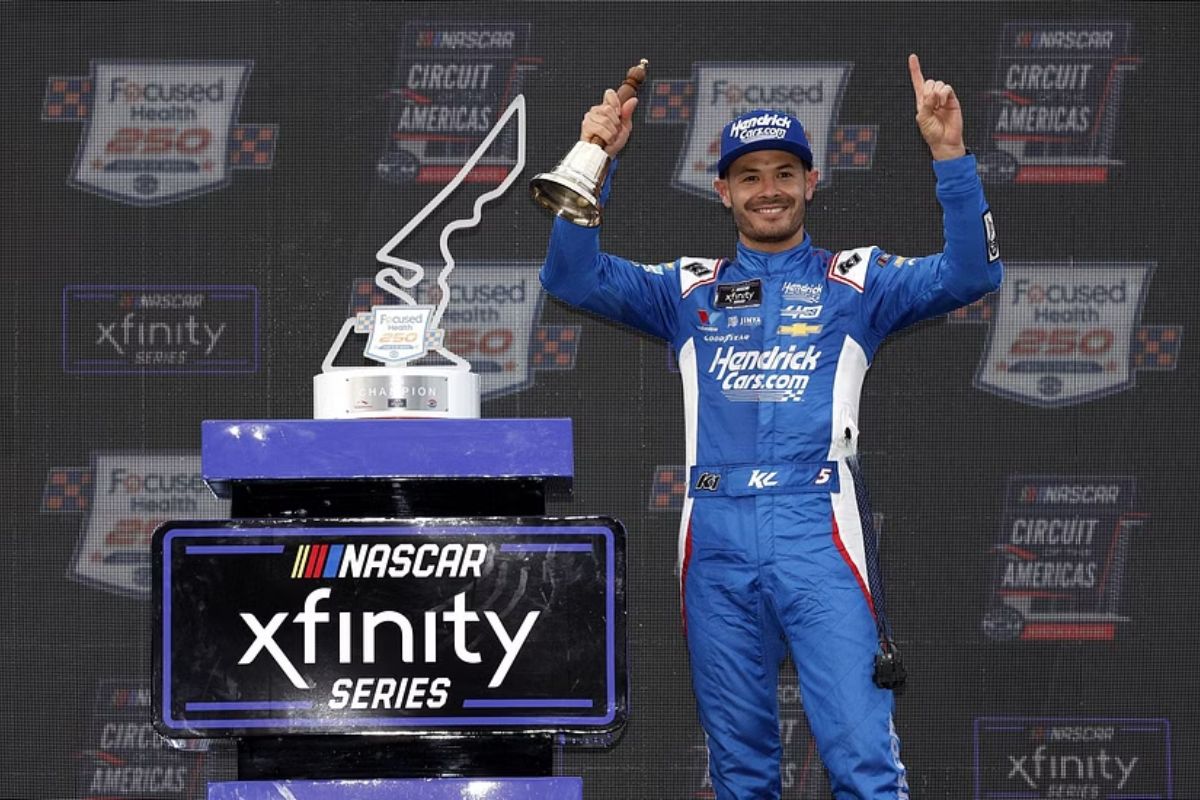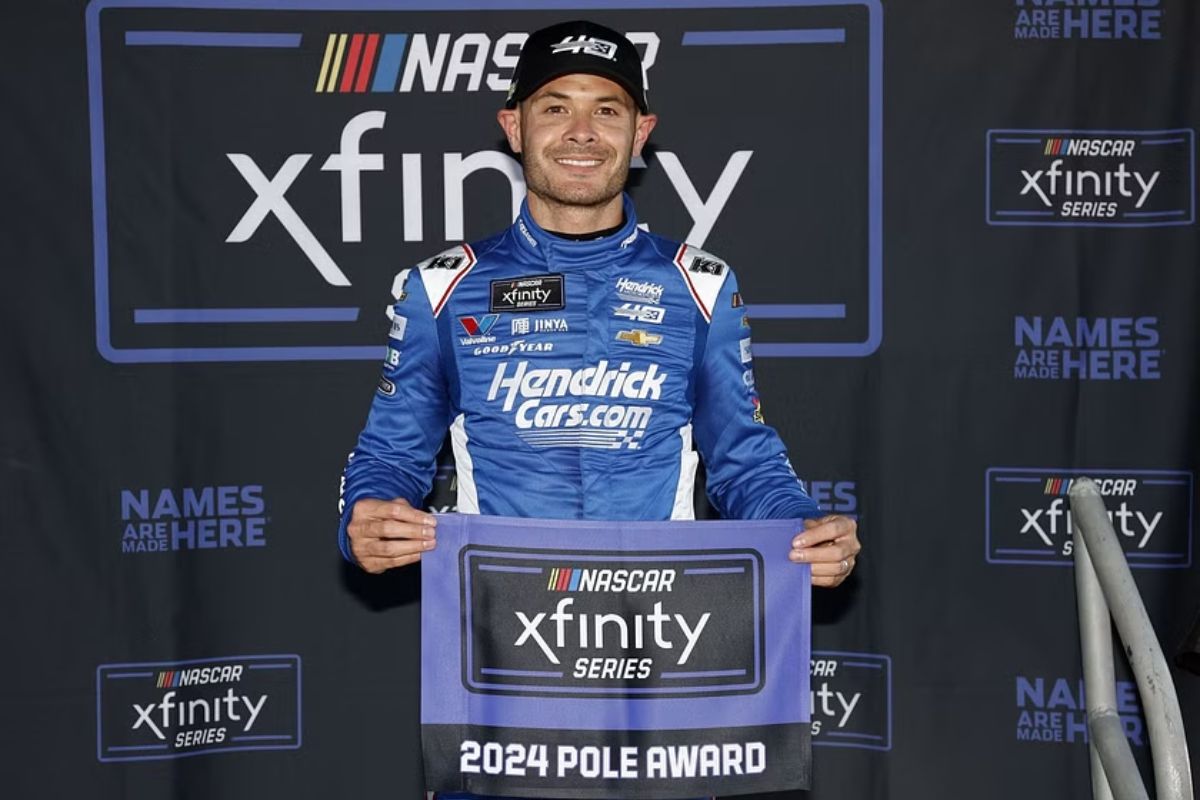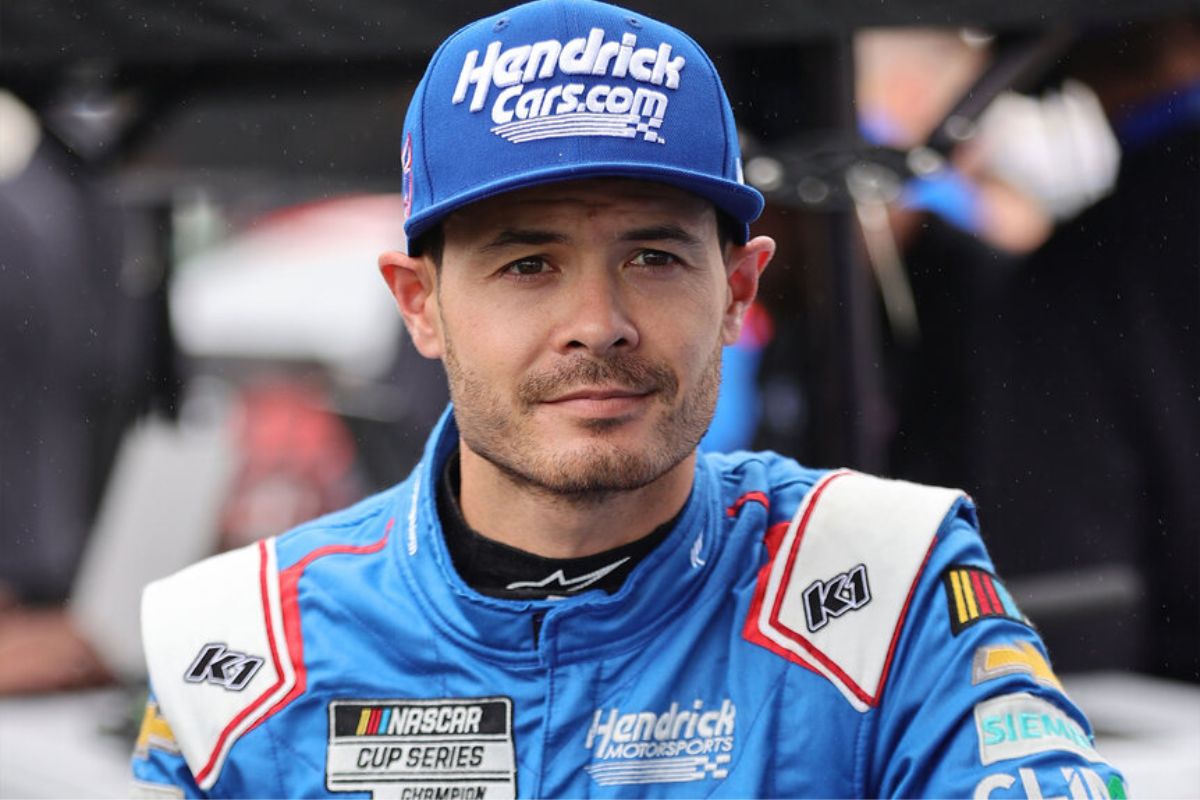Kyle Larson’s Game-Changing Move: Kyle Larson, alongside Brad Sweet, acquiring the All-Star Circuit of Champions and reinventing it as the High Limit Sprint Car Series, represents a significant shift in dirt racing’s dynamics. With a clear strategy to disturb the World of Outlaws’ dominance through innovative scheduling and a charter system, this move challenges established norms. However, success is dependent on attracting top drivers and securing sponsorships. Skepticism surrounds their departure from tradition, questioning long-term viability. Larson’s asserted focus on sport improvement rather than direct rivalry begs a deeper analysis of underlying strategies and potential implications for the dirt racing ecosystem. Further insights may reveal strategic depths not immediately apparent.
Table of Contents
Key Takeaways
- Kyle Larson co-acquired the All-Star Circuit of Champions, transforming it into the High Limit Sprint Car series.
- The new series challenges the World of Outlaws with a flexible schedule and a charter system.
- Larson’s focus is on improving the sport through collaboration, not rivalry.
- High Limit Racing introduces innovations aimed at engaging a wider audience and leveraging technology.
- The venture’s success could reshape dirt racing’s economic landscape and competitive dynamics.
Larson and Sweet Take Over All-Star Circuit of Champions
In a strategic maneuver that caught the racing community off guard, Kyle Larson and Brad Sweet acquired the All-Star Circuit of Champions in 2023, transforming it into the High Limit Sprint Car series, a decision that prompts an examination of its implications for the future of dirt racing. This bold step transcends mere sprint dominance; it signals a radical shift in the landscape of the sport, driven by a business venture that merges competitive spirit with commercial acumen. Larson and Sweet’s venture is not just a rebranding effort but a reimagining of what a racing series can be, leveraging their status and insights as drivers to forge powerful partnerships within the industry.
The significance of this move extends beyond the immediate buzz; it paves the way for series expansion and racing innovation. The duo’s inside knowledge of the sport and its stakeholders promises a series that is by racers, for racers, and the fans. However, one cannot overlook the inherent risks in such a venture. The transformation of a well-established series into a new entity introduces uncertainties. Can the High Limit Sprint Car series sustain its initial momentum? Will it foster or fracture existing alliances within the racing community?
Skepticism aside, the endeavor represents a fascinating case study in how driver partnerships can influence the direction of racing series development. As the series evolves, its impact on the broader ecosystem of dirt racing will be closely watched, offering lessons in how innovation and tradition can coexist—or collide—in the world of motorsports.
“I don’t think that they’ve done anything to us or we’ve done anything to them either. So we’re kind of both staying in our lanes. I think fans more read into it than what the World Racing Group or we do… We all have greater idea for the sport where we want to get so we’re both trying to move the sport in the same direction. It just looks a little differently and we’re brand new so we’re kind of finding our way a little bit and do things differently,” – (Larson)

High Limit Series Challenges World of Outlaws
By introducing a flexible schedule and plans for a charter system, the High Limit Series emerges as a formidable contender to the World of Outlaws, reshaping competitive dynamics within dirt racing. This strategic maneuver not only positions the High Limit Series as a direct rival but also signals a potential shift in the balance of power within the sport.
However, the success of this challenge hinges on several critical factors:
- Series Dynamics: The introduction of a flexible schedule and charter system by the High Limit Series is an innovative approach, assured to attract teams and drivers seeking more vital autonomy and potentially better financial terms. Yet, its effectiveness in disrupting the established dominance of the World of Outlaws remains to be seen.
- Driver Lineup: The standards and loyalty of the drivers within the High Limit Series will be a decisive factor. A strong lineup could significantly elevate the series’ profile and competitiveness. However, attracting top talent away from the security and prestige of the World of Outlaws requires more than just a promising framework; it demands proven success and stability.
- Sponsorship Deals: Financial backing is critical for the longevity and success of any racing series. While the High Limit Series may offer an attractive platform for sponsors, securing deals that can rival those of the World of Outlaws is crucial. Sponsorship dynamics often reflect confidence in a series’ marketability and sustainability.
Larson Denies Rivalry, Focuses on Betterment of Sport
Amidst swirling rumors of competition, Kyle Larson firmly redirects the narrative towards the mutual growth and enhancement of both dirt racing series, challenging the prevailing assumption of an inherent rivalry. From Larson’s perspective, the discourse shouldn’t be mired in conflict, but rather focused on the avenues through which these series can collaboratively foster sport improvement. This stance is a notable deviation from the competitive undercurrents often fueled by fan speculation and media narratives.
Larson’s dismissal of rivalry is not just a diplomatic maneuver but a strategic vision for the future of dirt racing. He emphasizes the coexistence potential of the two series, implying that their mutual collaboration could lead to extraordinary advancements in the sport. This approach counters the conventional wisdom that competition is the primary driver of progress, suggesting instead that unity could be equally transformative.
However, skepticism arises when considering the practical implementation of this vision. The economic and logistical challenges of aligning two distinct series with their own interests, schedules, and partnerships are difficult. Additionally, the fan speculation Larson refers to is not entirely baseless; it’s rooted in genuine concerns about market saturation, audience division, and resource allocation.
In essence, while Larson’s perspective on disclaiming rivalry in favor of sport improvement and mutual collaboration is applaudably idealistic, it necessitates a rigorous examination of its feasibility. The success of this endeavor depends not only on the willingness of both series to negotiate and adapt but also on their ability to address the underlying economic and competitive tensions that have fueled fan speculation to begin with.
“World Racing Group, they’ve done amazing job to get the sport out right now. I love the World Racing group Outlaws so that’s why I’ll continue to race World Outlaw events. There’s more traveling teams than there’s been in decades and there’s way more money to race for. I don’t just see how it’s had anything negative go on right now.” – (Larson)
Sweet Responds to World Racing Group’s Concerns
Responding to the concerns raised by World Racing Group CEO Brian Charter, Brad Sweet showed the importance of balance and innovation in addressing the challenges posed by High Limit Racing’s emergence in the sprint car racing landscape. Sweet’s perspective was analytical, focusing on the broader implications for the sport rather than immediate gains or losses.
From Sweet’s viewpoint, the situation necessitated a thorough examination into three critical areas:
- Evaluating Resource Allocation: Sweet acknowledged the validity of the World Racing Group’s worries about resource limitations. However, he argued that the introduction of new ventures like High Limit Racing could spark a more efficient distribution of resources across the sprint car racing landscape, ultimately benefiting all stakeholders.
- Potential Consequences for Existing Series: Sweet was skeptical about the doom-and-gloom predictions regarding potential consequences for established series. He posited that competition could serve as a catalyst for innovation and growth, rather than leading to the downfall of traditional formats.
- Long-term Impact on Sprint Car Racing: Sweet’s analysis extended beyond immediate effects, focusing on the long-term implications for sprint car racing. He stressed the importance of embracing change and innovation to guarantee the sport’s sustainability and appeal to future generations.
“There’s always negativity in anything you try to do big. At the end of the day, Kyle and I are going to stay true to our goal of trying to help sprint car racing. What people aren’t realizing is the growth of streaming audience and people are fully engaged, not just at track but from afar. These resources weren’t around six or eight years ago. I think in next three to five years a lot of this will sort itself out. We’re going to pay attention because the ultimate goal is to help. We don’t think competition is bad.” – (Sweet)

High Limit Racing: Pushing Boundaries Amidst Competition
In the fiercely competitive arena of sprint car racing, High Limit Racing has emerged as a formidable contender, challenging established norms and pushing the boundaries of innovation and audience engagement. The rivalry between High Limit Racing and the World of Outlaws, highlighted by Brad Sweet’s defense of High Limit Racing’s vision, shows a period of intense competition and strategic maneuvering within the racing community. This has led to a dynamic environment where traditional models are being questioned, and new opportunities for drivers and teams are being created, fostering both innovation and advancement.
| Aspect | High Limit Racing | World of Outlaws |
|---|---|---|
| Innovation | Pioneering in streaming platforms | Traditional broadcast methods |
| Competition | Introducing new competitive standards | Defending established norms |
| Audience Engagement | Expanding through digital mediums | Relying on conventional attendance |
This table represents the strategic divergences between High Limit Racing and the World of Outlaws, emphasizing High Limit Racing’s commitment to leveraging technological advancements and strategic partnerships to enhance audience engagement. The skepticism lies in whether this approach can sustain in the long term amidst the deeply rooted traditions of the racing community. While High Limit Racing’s initiatives signal a shift towards a more digitally engaged and diverse audience base, the implications for traditional racing circuits and their existing fanbase are yet to be fully realized. This ongoing debate in the sprint car racing domain summarizes the delicate balance between innovation and tradition, challenging the stakeholders to reassess their strategies in light of evolving competitive landscapes.
News in Brief
The takeover of the All-Star Circuit of Champions by Kyle Larson and Brad Sweet, and the establishment of the High Limit Series, presents a significant challenge to the established World of Outlaws series. While Larson denies any intent of rivalry, focusing instead on the sport’s betterment, the movement has undeniably stirred concerns within the World Racing Group.
The High Limit Racing initiative, by pushing competitive boundaries, introduces a pivotal moment in dirt racing, potentially reshaping its commercial and competitive landscapes. This development warrants close observation for its implications on the sport’s future dynamics.
Our Reader’s Queries
Q: What is the High Limit Sprint car series?
A: In 2024, Hight Limit Racing is set to expand its operations to encompass 50 races, introducing the exciting Midweek Money Series. This expansion coincides with the full-time inclusion of Brad Sweet, the reigning 2023 World of Outlaws Sprint Car Series champion. A staggering $5 million in prize money will be up for grabs, with the champion standing to earn a substantial $250,000 from the generous $1 million points’ fund.
Q: Who owns the High Limit Sprint car series?
A: The High Limit Sprint Car Series, owned by NASCAR Cup champion Kyle Larson and World of Outlaws legend Brad Sweet, is set to implement a charter system by the end of the 2024 season. This strategic move aims to fully establish the system by 2026, as reported by Adam Stern of the Sports Business Journal.
Q: Is Kyle Larson related to Brad Sweet?
A: Before Brad Sweet’s sister married Kyle Larson, Larson and Sweet, who is a three-time defending World of Outlaws Champion, had a strained relationship that spilled onto the racetrack, causing a division between their families for a few years.
Also Read: Kyle Larson Unveils COTA’s Secrets: Get Ready for Chaos!


